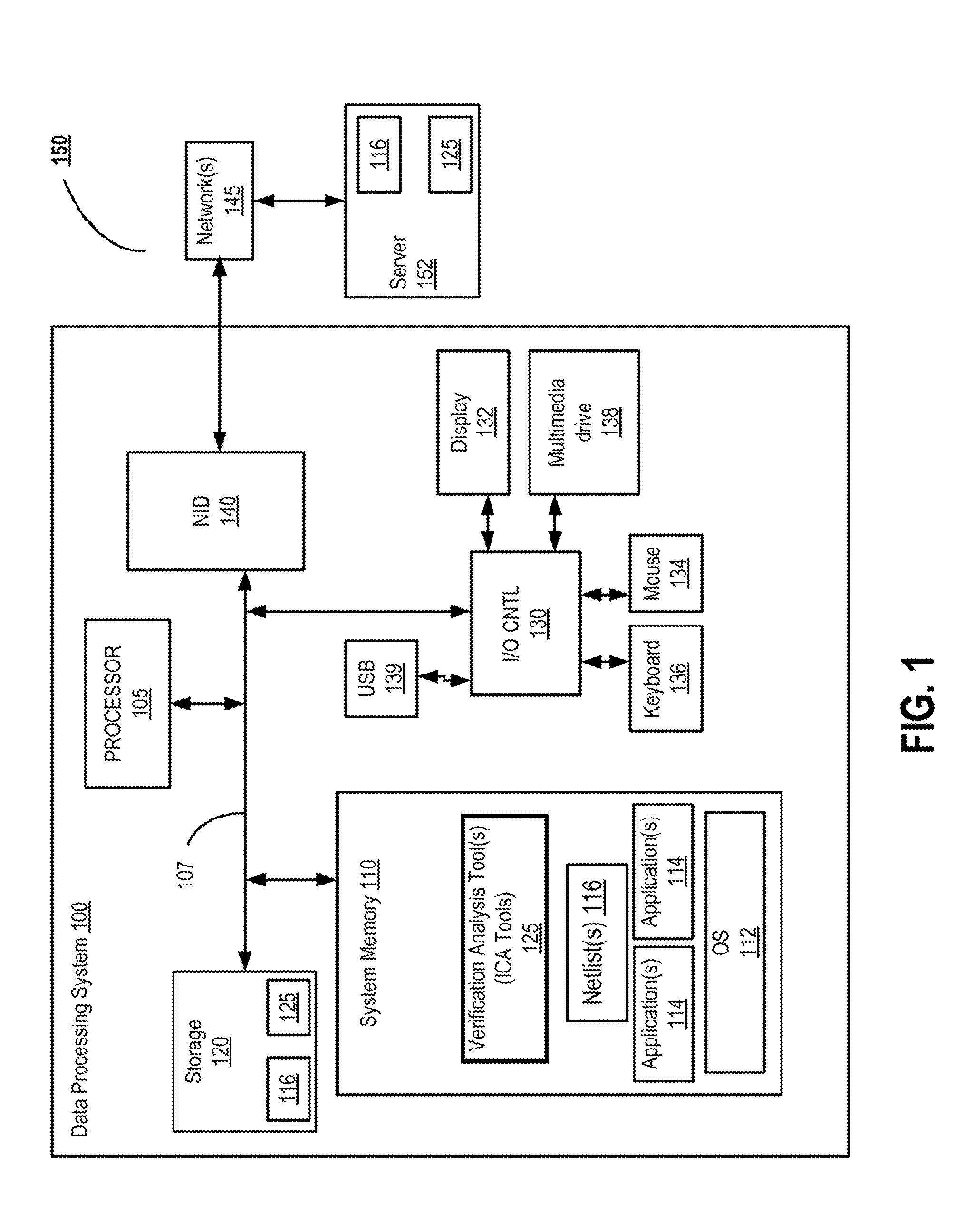Constructing inductive counterexamples in a multi-algorithm verification framework
a verification framework and inductive counterexample technology, applied in the field of verification techniques for integrated circuit logic design, can solve the problems of inconclusive inductive techniques, exponential computational resources, computational resources,
- Summary
- Abstract
- Description
- Claims
- Application Information
AI Technical Summary
Benefits of technology
Problems solved by technology
Method used
Image
Examples
Embodiment Construction
[0017]The illustrative embodiments provide a method, system and computer program product for constructing inductive counterexamples in a multi-algorithm verification framework. Specifically, the embodiments provide a method, a system and a computer program product that implement techniques for enabling the generation by a computer of adequate induction counterexamples to allow a user or automated process to infer the true reason for an inductive failure in a design and refine proof strategies accordingly. Generally, the method provides several computer-implemented techniques, including: a first computer-implemented technique for generating an inductive counterexample from a multi-algorithm verification framework; a second computer-implemented technique for generating an adequate inductive counterexample through inductively-provable redundancy removal; and a third computer-implemented technique for generating an adequate inductive counterexample through redundancy removal, which may ...
PUM
 Login to View More
Login to View More Abstract
Description
Claims
Application Information
 Login to View More
Login to View More - R&D
- Intellectual Property
- Life Sciences
- Materials
- Tech Scout
- Unparalleled Data Quality
- Higher Quality Content
- 60% Fewer Hallucinations
Browse by: Latest US Patents, China's latest patents, Technical Efficacy Thesaurus, Application Domain, Technology Topic, Popular Technical Reports.
© 2025 PatSnap. All rights reserved.Legal|Privacy policy|Modern Slavery Act Transparency Statement|Sitemap|About US| Contact US: help@patsnap.com



